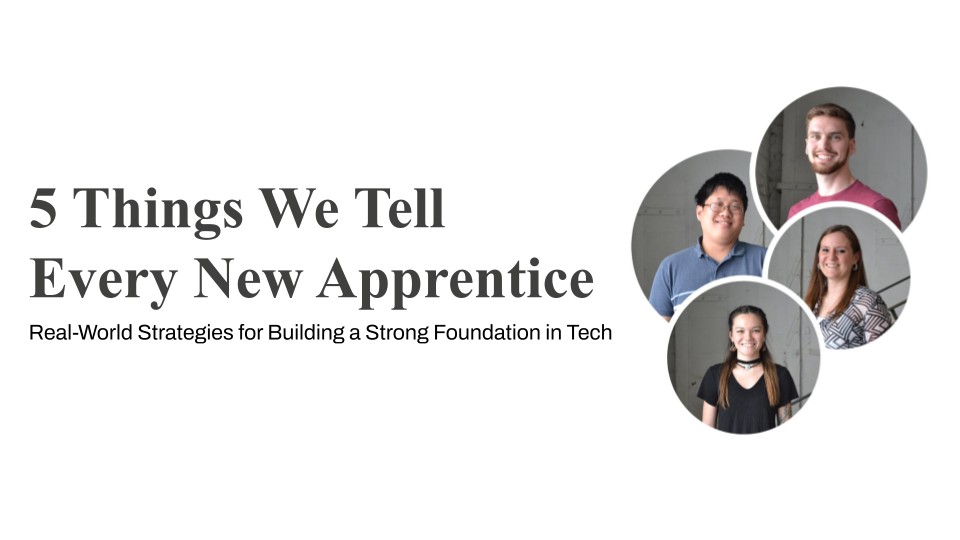How Do I Love Thee? Techies Wax Poetic About Passion Projects
By MAXX Potential
- Posted:
- Apprenticeship

“Necessity is the mother of invention,” so they say, but how often do you think that passion and curiosity actually lead the way for tech problem solving, learning, and new creations?
Innovation often blooms from a pain point, and as you’ll see below, each of the passion projects began with a question, curiosity, or necessity. But one thing that sets each of these stories apart is how each technologist took their idea and kept expanding on what their application could do.
At MAXX Potential, two of our core values are curiosity and initiative. We love to see our technologists step into their own interests and apply their tech skills to creating a project that solves their problem or explores some whimsy.
Today, we’re going to look at three passion projects, coupling each with a bit of love poetry.
Love Notes to Our Favorite Passion Projects
Diamond Compare: How Do I Love Thee?
Diamond Compare (inspired by Elizabeth Barrett Browning’s Sonnet 43 “How Do I Love Thee?”)
How do I love thee? Let me analyze
The cut, color, clarity, and carat
My code can reach, when scraping all the buys
For the diamond that matches your merit.
I love thee like I love coding daily
In the morning blush and the evening hush.
I love thee without err, to not fail thee
In search of the best diamond without rush.
I love thee with the passion put to use
In Python library and web scrapers
To find thee a rock to seal this love ruse.
I love thee so, to search even vapors,
Only to find the ideal ring, storefront.
I love thee, not because of that code stunt.
The Story Behind Diamond Compare
“When Gillian and I started talking about marriage, we looked at engagement rings online and in-store, but I wanted to find the sweet spot – the best diamond for the best price.” John Dlugokecki, MAXX Potential Partner, shared.
After that realization, John sat down at his computer to figure out how to find that sweet spot. He used a Python library called Scrapy and Metabase, his go-to analytics tool.
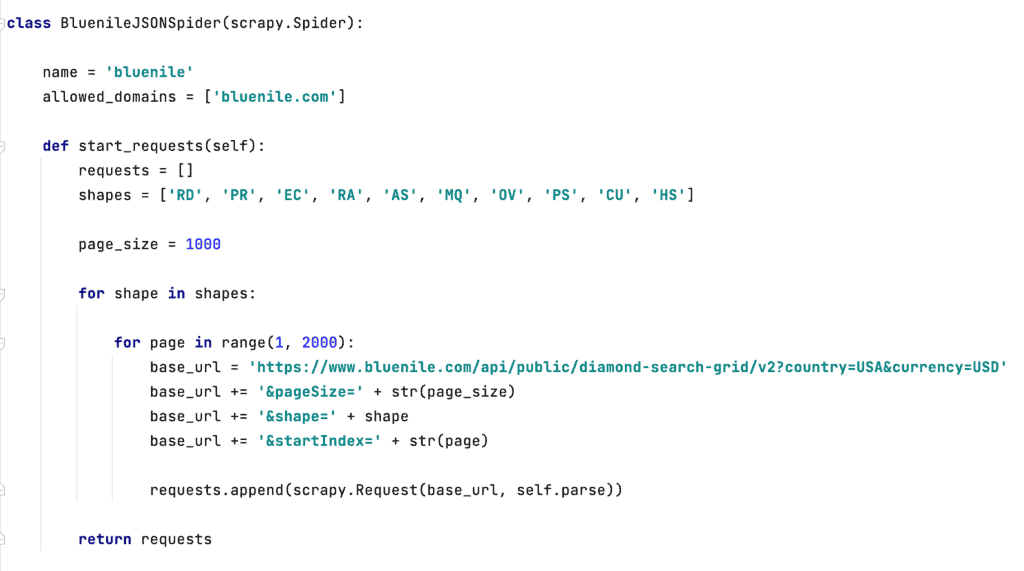
“I definitely had sticker shock at the price of diamonds,” he said. “But when we compared a real diamond alongside other rocks, there was no comparison.”
To find out everything he needed to know about diamonds, John leaned into web scraping to capture all the data he could from large diamond stores. He had to work backwards because he needed to understand what data he wanted for his comparison. Once he knew which details to track, he could build the next part.
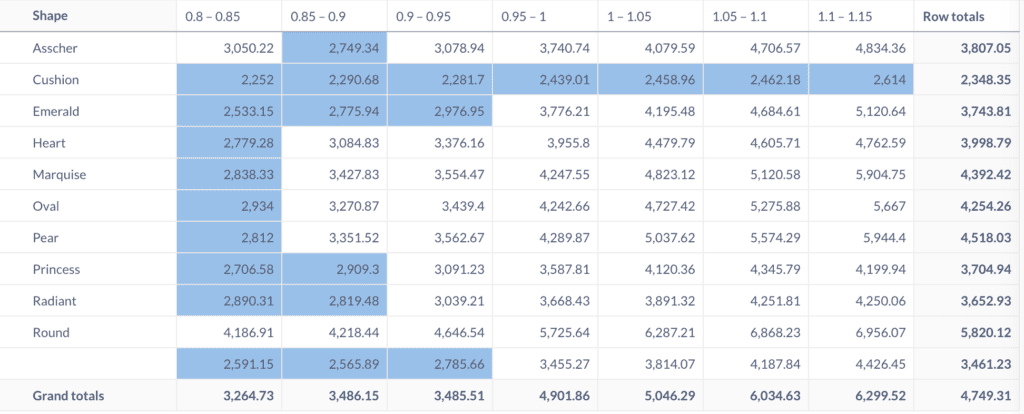
Each website he wanted to crawl was slightly different, and that presented a puzzle. He needed a system that would programmatically click through web pages and grab the information. Additionally, the web scraping bots had to move quickly but not too quickly as to not alert website blockers.
“Websites want traffic, but when they recognize too many hits at once from a certain IP, they’ll start working to block you.” John explained. “It was fun engineering ways to get around blockers, and at what point do they start throttling you?”

To keep his own computer from being blacklisted, he opted to send his web crawlers through other servers. So if you’re in New York City or Austin, Texas, and you can’t visit a diamond jewelry website, you can blame John (just kidding, it doesn’t work like that).
The web crawlers worked smoother than 120fps, and data flowed into the database. From there, John reorganized the data to find that sweet spot in diamonds, analyzing the information.
“It turned out to be a great learning opportunity, and I enjoyed the process of using the web scrapers to funnel information to the database.” John said. And when asked if he found that sweet spot diamond through his passion project, he chuckled. “We ended up finding the diamond in-store.”
Tea Party: Let Me Not to the Marriage of True Minds
Tea Party (inspired by Shakespeare’s “Sonnet CXVI”)
Let me not to the passion of projects
Admit impediments. Coding is love
Which alters when exceptions err and wreck,
Wanting attention and all the above.
O, no! it is a true love that consumes,
That asks how to solve or make learning fun.
It’s the whistle to the tea party’s fumes
Signaling the conversation’s just begun
Problem solving ideas to make CVs
Interactive with Javascript, Three.js,
and Blender – tools of fun work and hobbies.
What if I added some random bluejays?
If this passion be error, upon me proved,
I never writ, nor no one ever loved.
The Story Behind Tea Party
“I wanted to foster a sense of playfulness during a conversation around my professional information and portfolio while serving tea at the same time.” Shawn Yu, MAXX Potential Apprentice Level 3, said.
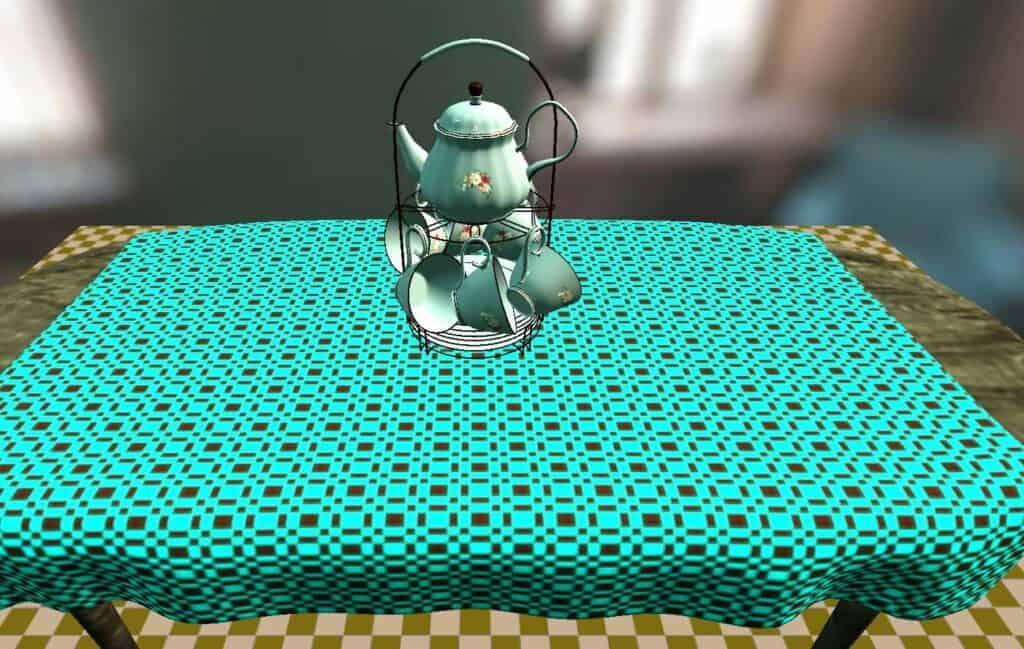
For most industries, job searches and applications fall into the monotonous category, where hiring managers and job applicants do the dance of paperwork shuffling. Some industries require a portfolio of projects in addition to the resume or CV, and tech is one of those spaces.
Shawn created the digital tea party with Javascript and the Three.js library, and he brought three-dimensional life and movement to the teapot, teacup, and saucers with Blender.
“In one way, it symbolizes a civilized environment, but on the other hand, I really just liked the Mad Hatter scene from Alice in Wonderland.” Shawn shared some of his inspiration for the whimsical project.
Upon exploring the application in real time, the digital tea party starts out with propriety in mind, and users can set the table while checking out other projects created by Shawn. Things go awry though when you click around a bit more. Teacups fall from the sky, and saucers fling other recently-set items off the table.
Has Shawn used this application in a job interview? We’ll have to get back to you.
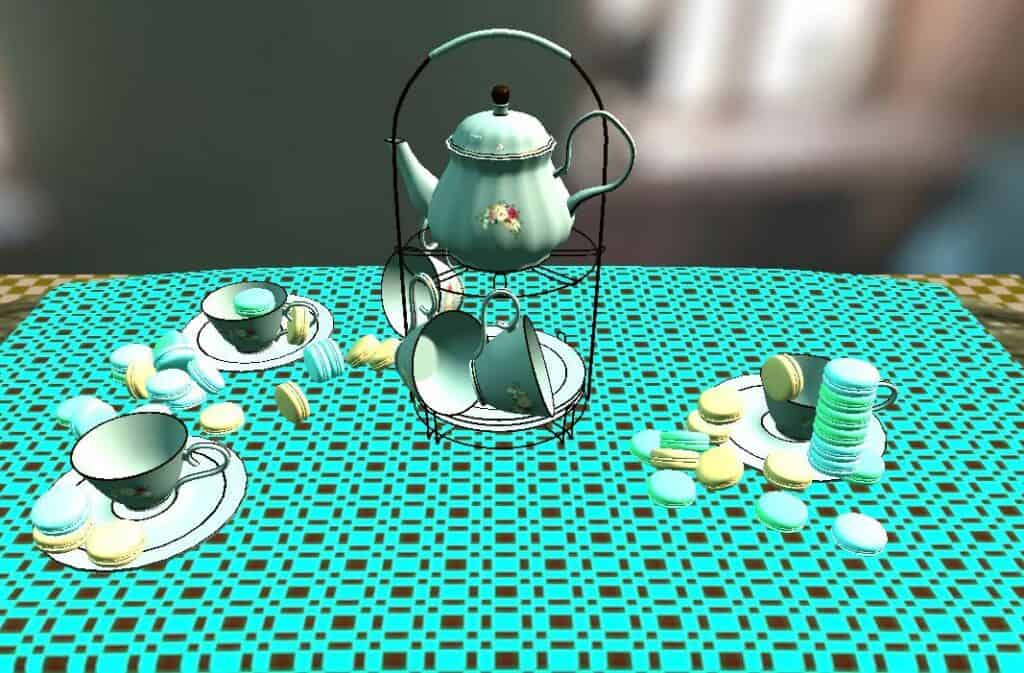
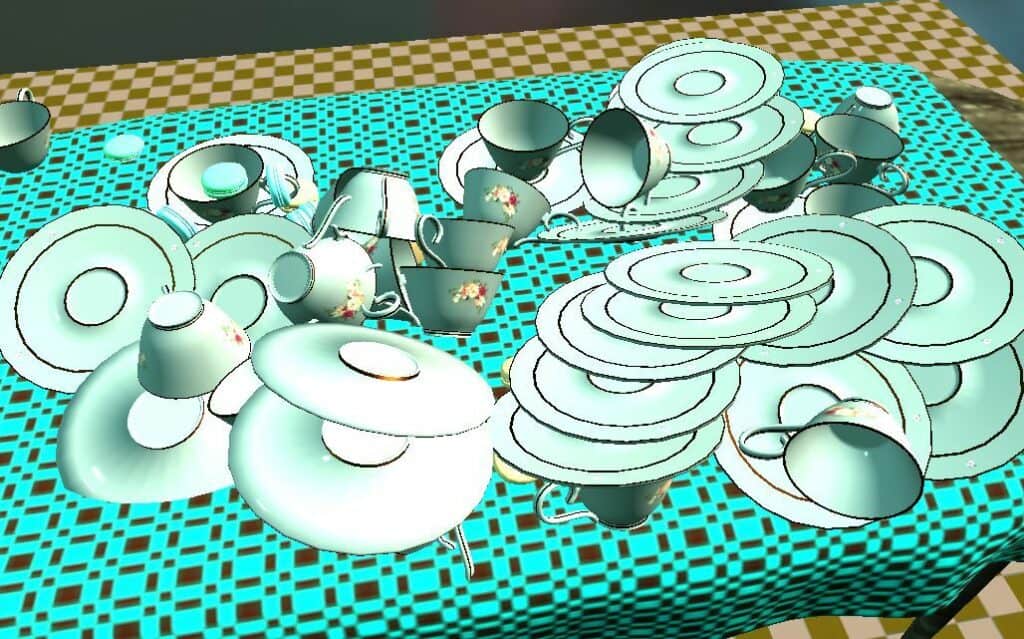
Has Shawn used this application in a job interview? We’ll have to get back to you.
Plants Worth Plantin’: Roses Are Red
Plants Worth Plantin’ (inspired by “The Rose is Red”)
Roses are red;
Violets are blue.
Plants worth plantin’
Are chosen by you.
What plants go in
My yard? I ask.
Think land, sun, shade,
– flowering damask.
To organize,
I built a site
With web hosting
And data might.
It started small
– Basic info,
But I wanted
More green inspo.
I set up fields
In database
But it was slow
To my own gaze.
I made a form,
Checking each box
To add info:
Dirt, wet, light, rocks.
Then I wanted
Pristine display
And easy sort
Of plant array.
The plant site grew
With security,
Web responsive,
And utility.
What started as
A yard subject
Became backend
Coding project.
I keep thinking
Of more to do
On my website.
It’s much ado!
My plant list grows.
The site to-do
Plan just expands.
Yard remains askew.
The Story Behind Plants Worth Plantin’
“I took a landscaping class this summer and learned that it was a good idea to plan out everything I wanted to put in my yard before putting anything in the ground.” Brandon Phillips, MAXX Potential Apprentice Level 2 said.
Doing what technologists do best, Brandon turned to his tech skills to help him organize the plants he wanted in his yard. He started a list of plants, gathered basic information, and tried to coordinate what would work best in his yard.
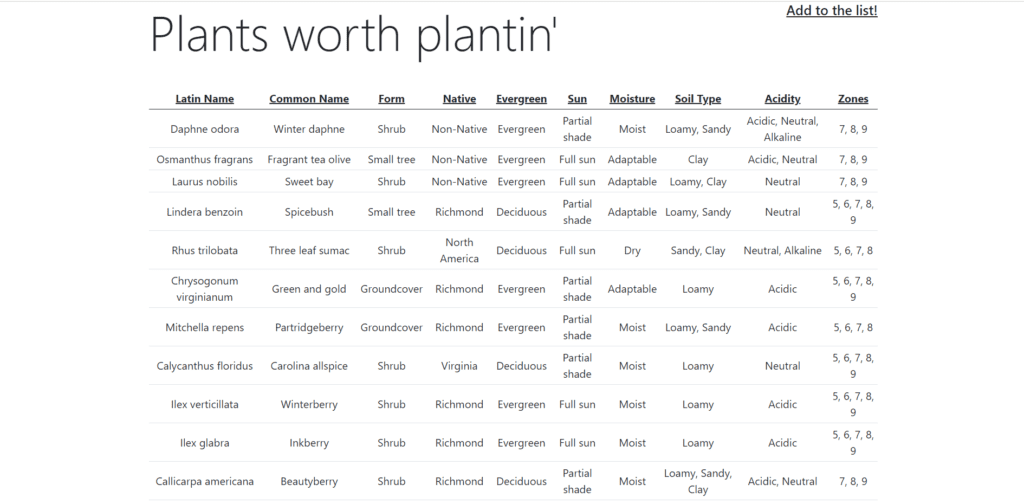
“I already had a web hosting account, so I created a database with all of the fields to track, and I started entering each plant’s info through the backend.” Brandon explained. This became tedious, and so he decided to create a form that had check boxes so he could add information quickly without a lot of typing.
As Brandon’s database of information took shape, he found more and more ideas of how to streamline his user experience, organize the information, and sort the plant data. He added device responsiveness to the project and then added security features.
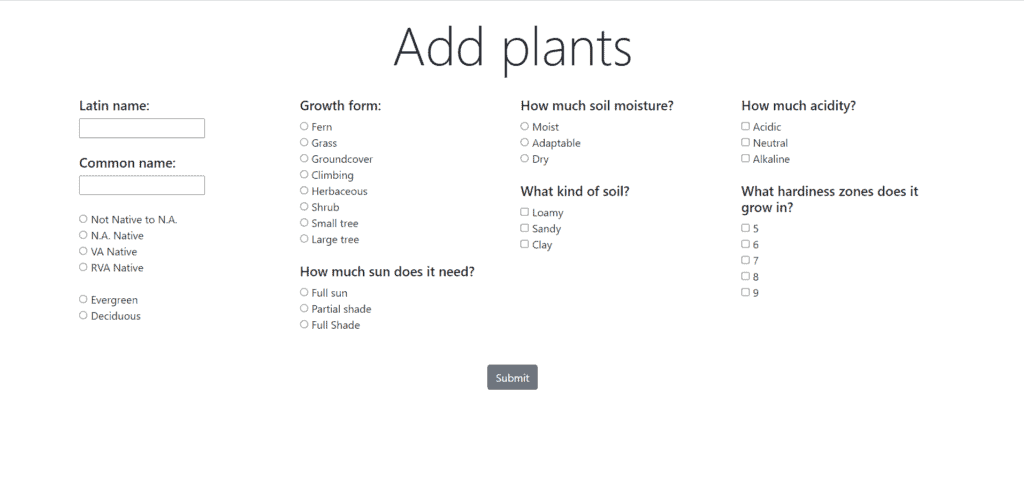
“The project definitely helped me get organized, but now I just keep thinking of new features I want to add and better ways to display the data.” Brandon said.
Has Brandon used his database to choose plants for his yard? He shared the following, “I bought a few plants and put them in this fall but will hopefully be putting in a lot more this spring and summer!”
Ready to Express Your Love for Tech?
A career in technology requires a certain level of love, curiosity, and passion! Are you interested in pursuing a career in technology? Then we’d love to have you join our Career Lab! Find out more at maxxpotential.com/career-lab.
MORE POSTS
Real-World Strategies for Building A Strong Foundation in Tech
MAXX Alumni Success Story with Cassidy Fuller, Business Systems Analyst III at Chicago Transit Authority
How to Maintain An In-Person Connection and Work From Home

